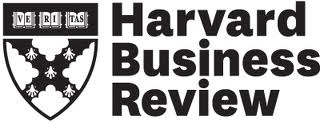 Is the continuing wave of digital advancement poised to cause more disruption for publishers? Not from where Josh Macht sits.
Is the continuing wave of digital advancement poised to cause more disruption for publishers? Not from where Josh Macht sits.
The executive VP of the Harvard Business Review recently spoke to John Watkins about the unique opportunities facing print publishers right now. The interviewed appeared last week month in Fipp.
“…while everything is increasingly digital, that doesn’t mean there is no role for print or for the physical,” Macht said. “The hard part is that you have to make the physical magazine the best magazine it can possibly be.
“If you look at something like the Apple Store, in a world dominated by Amazon, there’s still room for the physical store. It’s just it needs to be an amazing experience that really captures people who have limitless choice. That doesn’t mean that the physical experiences are going to go away. It just means that the bar is probably raised for what people expect from them,” Macht continued.
Part of raising that bar, Watkins explains, is by raising the reader experience on all channels in ways that take advantage of readers’ digital behavior. They call it “The Big Idea,” which Macht describes as the “eventification of an article.”
It’s a way of building engagement and keeping momentum with your audience in between the six monthly print issues.
“So you sign up for this thing and then every week you’re receiving something new. It might be an assessment, it might be a podcast,” Macht explains. “It kind of grows to a crescendo. The piece is part of an experience that all goes back to ‘how do we make these ideas come to life in a way that you can really put it to use?’”
Thinking in terms of this Big Idea has helped the editorial team look at the future in a new way, too. Watkins asked Macht about the new opportunities presented by augmented and virtual reality. For HBR, they are thinking about things like robotics and self-driving cars, and how that will open up new publishing platforms for brands with something relevant to offer.
“Can we start to think about the HBR archives in ways that we can use machines to get smart, for example? How can those archives, powered by machines, really serve a CEO? That’s where all of a sudden trends come together,” Macht explains. “Are there virtual worlds where we can bring people together? For instance, we do something called the HBR ‘How I did it’ feature, which is part of the magazine. So can we have the CEO talk with an editor using VR? Imagine if that CEO is talking about his or her business and we can bring the audience into their business, to show them the shop floor, to talk about an issue the audience is really dealing with. These are trends that are happening right now and it’s incumbent upon the media company and HBR to find really lean and low-cost ways to learn as much as possible about where our future customer is heading.”
Macht believes that publishers have a rare opportunity to step into this space and provide worthwhile content. And recent research certainly supports the financial viability of that idea.
According to a new study from Neuro-Insight, high-quality editorial content has a much larger impact on readers than the typical social news feeds content. For publishers looking to create a new publishing model that appeals to readers and advertisers, this is welcome news.
“The study, conducted in conjunction with outstream video provider Teads, tested editorial articles from the company’s publisher partners including Time Inc., Condé Nast, Forbes, and The Atlantic,” writes Tobi Elkin in MediaPost. “It found that the value of high-quality editorial is 16% more personally relevant and engaging than social news feeds.”
Ads run within this framework of memorable content performed significantly better for advertisers, offering new possibilities for ad revenue as media brands distance themselves from sponsored content. As magazine media brands like HBR embrace the future, they perfectly positioned to take full advantage of the value of high-quality editorial content and rich ad support.
